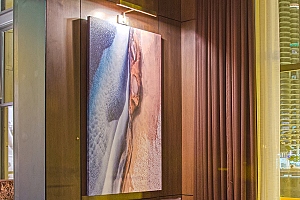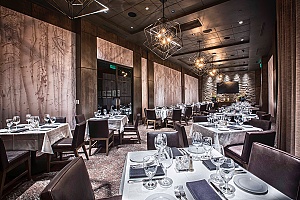 Acoustic wall art is a functional option for improving a space, but it also contributes aesthetic elements that can transform a room. While this versatility can be a tremendous asset, it can also create challenges when a room already has a strong visual and functional identity. How do you seamlessly integrate acoustic wall coverings into an existing design without compromising their aesthetic appeal?
Acoustic wall art is a functional option for improving a space, but it also contributes aesthetic elements that can transform a room. While this versatility can be a tremendous asset, it can also create challenges when a room already has a strong visual and functional identity. How do you seamlessly integrate acoustic wall coverings into an existing design without compromising their aesthetic appeal?
Acoustic panels are highly customizable, so it’s essential to have an idea of the designs, patterns, and shapes that will complement your space before placing your order. This allows you to create a focal piece that accentuates your room’s strengths or mutes its weaknesses. If you’re still unsure about how to incorporate acoustic wall coverings into your existing design, start with these tips.
Understanding Acoustic Wall Art Covering Functions
Before making decisions about how to use acoustic wall coverings, it is necessary to understand how they function. Wall coverings can be made from various materials, but they all have the ability to reduce ambient noise in a room. They interrupt sound waves as they attempt to bounce off the surface, decreasing echoes and general background noise.
However, to function at their best, they must be installed strategically. This is part of how to incorporate panels into a room that is already set up. Wall coverings absorb sound based on their material, location, and spacing. Beyond that, they can be customized to showcase anything from bold, solid colors to photorealistic prints, allowing every space to install something that suits their needs.
Incorporating Acoustic Panels into Existing Designs
If you know you want acoustic panels but are still unsure what they should look like or where to put them so they do not interfere with your current aesthetic, be sure to:
Think about colors and patterns
If you are working with an existing design, you already have colors and patterns in a room that, presumably, are well coordinated. There are two options for acoustic wall coverings in this situation. Select designs and shades that complement other elements in the room, allowing the panels to blend seamlessly with the room’s aesthetic.
 Alternatively, opt for something bold, such as a statement piece. If only one area of the room will be adding wall coverings, a statement piece can be an impactful choice; consider a bright, contrasting color and a lively piece of furniture or art in front of it to draw the eye.
Alternatively, opt for something bold, such as a statement piece. If only one area of the room will be adding wall coverings, a statement piece can be an impactful choice; consider a bright, contrasting color and a lively piece of furniture or art in front of it to draw the eye.
Don’t compromise function
While acoustic wall coverings may be beautiful and versatile, they must still fulfill their sound-controlling function to maximize their value. Placing wall coverings in less-than-opportune locations solely for aesthetic purposes reduces the efficacy of their sound-dampening properties.
Acoustic panels perform best when they are installed opposite the source of sound. This location might be across from a particularly noisy room or opposite from the direction people are sitting. In general, it is recommended that wall coverings be installed at a minimum of eye level, though using them on the entire wall is also viable.
Make sure there is space
Some acoustic coverings are designed to cover an entire wall, but if you choose portrait-style panels, it is best (for both aesthetic and functional reasons) to leave some space between them and other objects. About three inches is the minimum, but a foot or so is ideal. By spacing your wall coverings out compared to other elements in your existing room, you can make sure they function correctly.
Don’t forget to look everywhere
Acoustic wall coverings, as their name implies, are most commonly used on the walls. However, your existing design might call for more panels than you have room for. Do not forget to look at the ceiling! Acoustic panels can also be installed above, creating a dramatic hanging ceiling or adding texture and interest above people’s heads.
They will continue to dampen sound from this location, and they can take your existing room up a notch without actually changing anything at eye level.
Leverage the Functional Aesthetics of Acoustic Wall Art
 It is always more challenging to update existing rooms than it is to start with a completely blank slate. However, that does not mean that it is too late to install acoustic wall coverings. In fact, these functional additions just might be the missing ingredient to your space’s aesthetic.
It is always more challenging to update existing rooms than it is to start with a completely blank slate. However, that does not mean that it is too late to install acoustic wall coverings. In fact, these functional additions just might be the missing ingredient to your space’s aesthetic.
Whether they are covering the entire room or only a small section, consider how their colors, designs, patterns, placement, and spacing can all impact both their function and their role within the space. If you are still considering how to maximize the potential of wall coverings, contact the team at Tree Towns. We can help you explore your options and choose a strategy that suits your specific needs!
